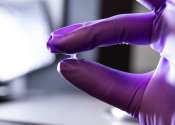Researchers characterize influenza adaptation to human epithelial cells, with surprising results
The 1968 influenza pandemic was caused by the H3N2 flu strain and killed between 1 and 4 million people globally. For the sake of comparison, the WHO estimates that around 3 million people died of COVID-related illness in ...









